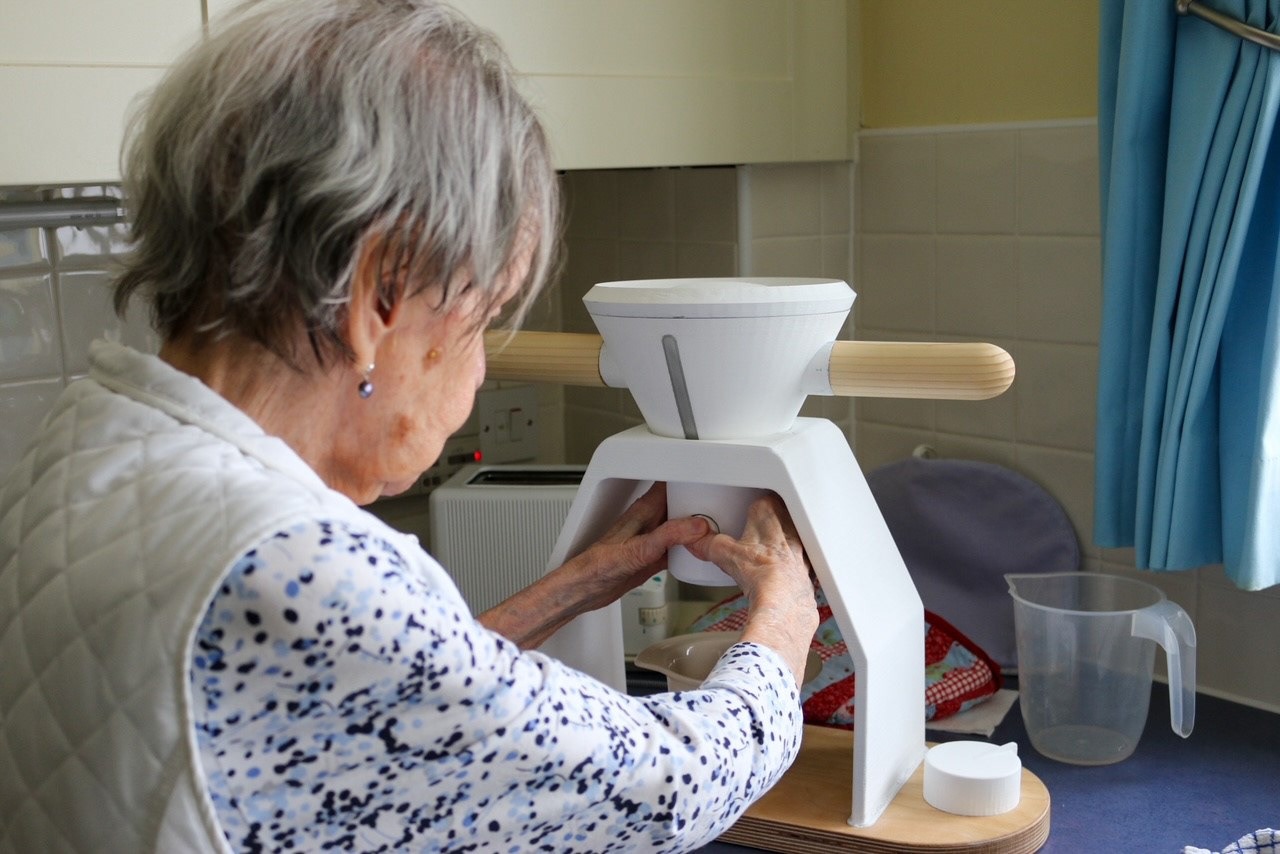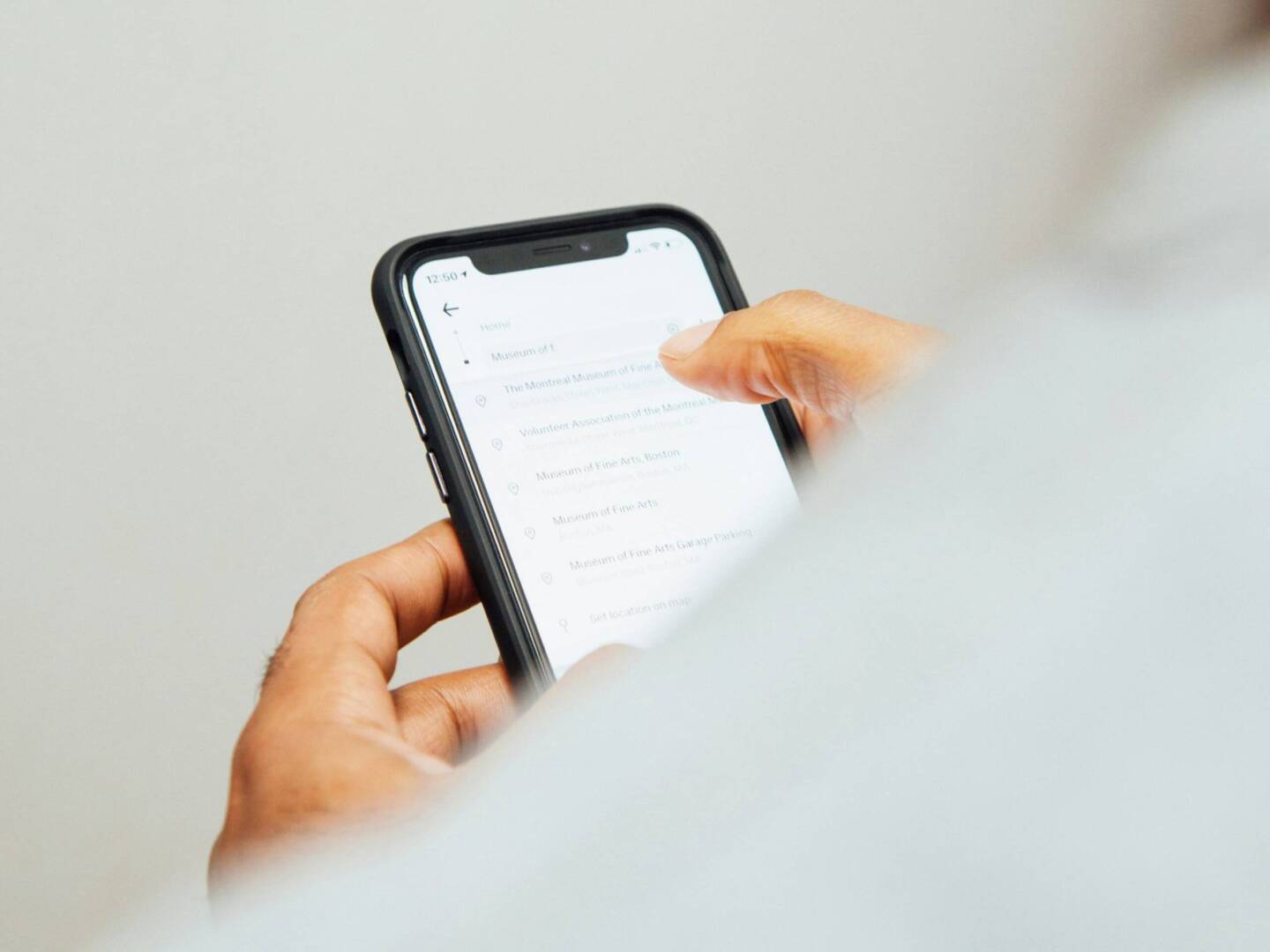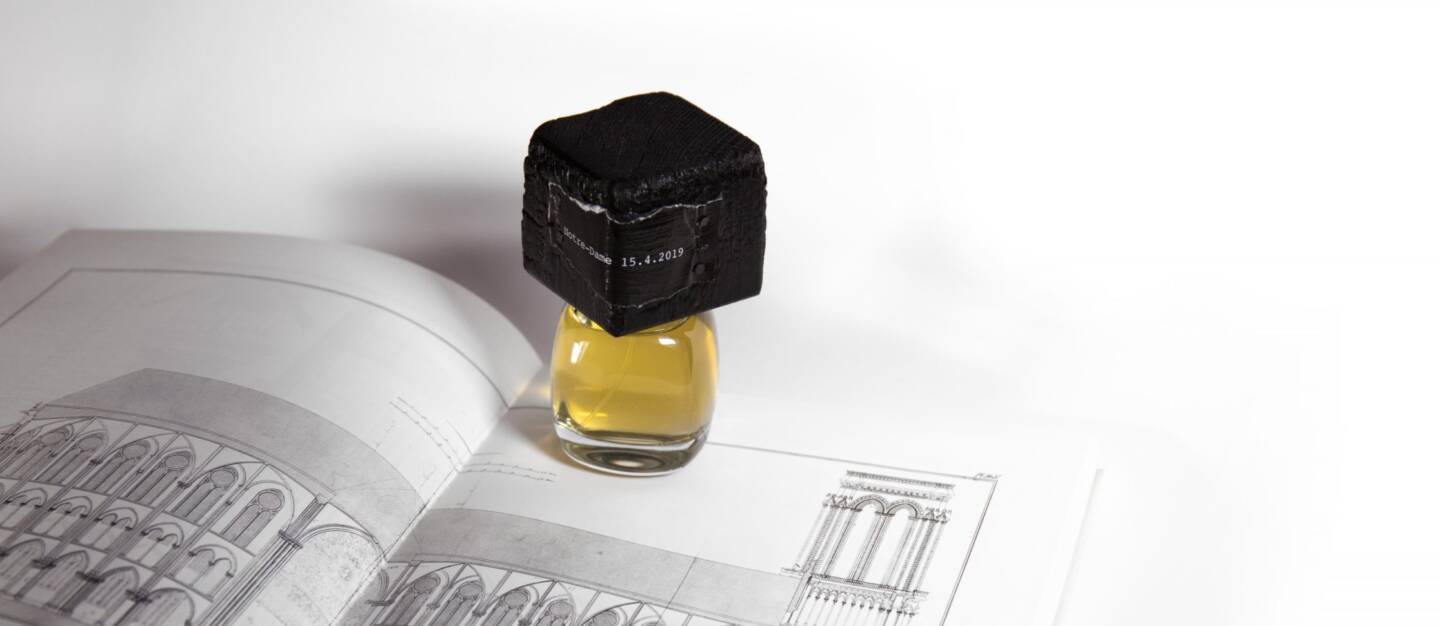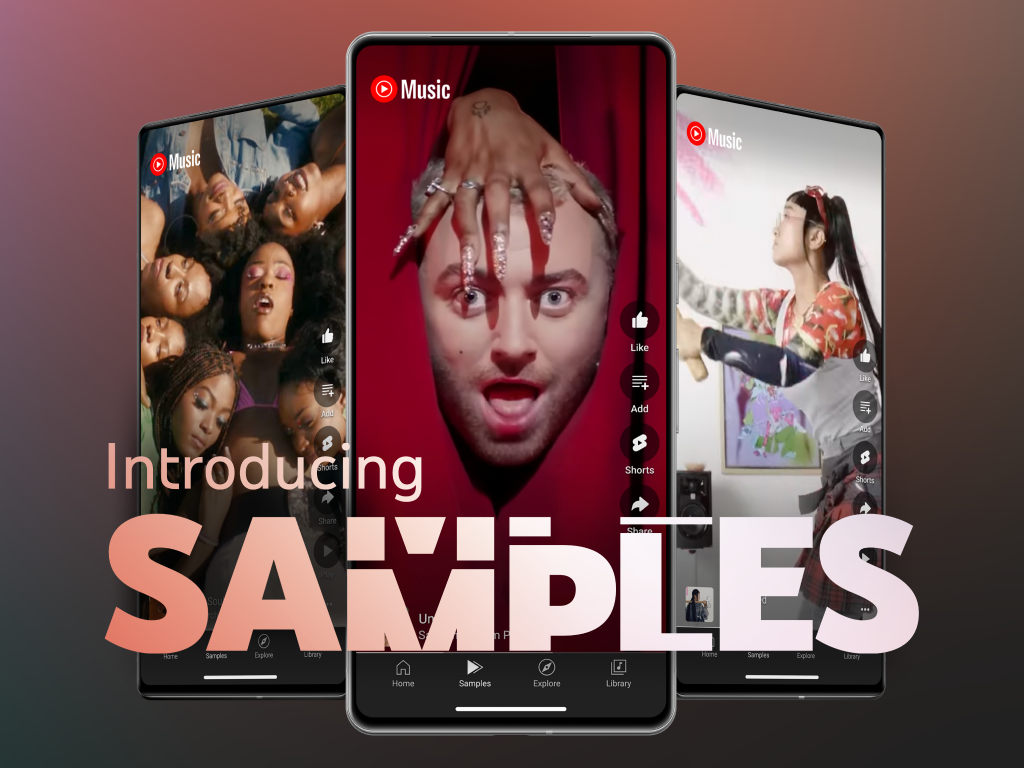
Testy użyteczności – czym są i kiedy je przeprowadzić?
Testy użyteczności w projektowaniu interfejsu użytkownika (UX) to rodzaj testów, w których produkt lub usługa jest testowana przez użytkowników, aby sprawdzić, czy jest łatwa w obsłudze i czy spełnia oczekiwania użytkowników. Celem testów użyteczności jest zidentyfikowanie problemów z użytecznością produktu lub usługi i zaproponowanie rozwiązań, które pozwolą na poprawienie jej działania.
W artykule wyjaśniamy:
- Czym są testy użyteczności i jak wpływają na projektowanie interfejsów?
- Jakie problemy pomagają rozwiązać?
- Kto powinien stosować testy użyteczności?
- Jakie są rodzaje testów?
- Jak przebiega testowanie użyteczności?
- Jakie zadania wykonują użytkownicy?
- Jakie korzyści biznesowe wynikają z testowania użyteczności?
Testowanie użyteczności jako typ badań UX
Badania UX, w tym badanie użyteczności, potrafią być prawdziwym kompasem dla produktów cyfrowych. Zarówno dla tych budowanych, gdzie trzeba od podstaw zbudować funkcjonalność, jak i tych wprowadzonych na rynek, które nie wykorzystują swojego potencjału. Dzięki ich użyciu potrafią wskazać odpowiedni kierunek prac na etapach projektowania interfejsów.
U debiutantów rynkowych testy UX są istotną fazą projektu. Natomiast właściciele aplikacji, stron czy sklepów internetowych, muszą śledzić rynkowe trendy. Nawet odnoszące sukcesy aplikacje i witryny w końcu stają się przestarzałe lub niekompatybilne ze standardami technologicznymi nowych urządzeń użytkowników.
Co można zbadać za pomocą testów użyteczności?
Testy pozwalają odpowiedzieć na kluczowe pytania dotyczące doświadczeń użytkowników, np.:
- Czy nawigacja jest intuicyjna? – Użytkownicy powinni bez problemu odnajdywać potrzebne informacje i poruszać się po stronie zgodnie z założonym user flow.
- Dlaczego użytkownicy nie wykonują oczekiwanych działań? – Niska konwersja może wynikać z nieczytelnych CTA, zbyt skomplikowanego procesu zakupowego lub nieintuicyjnego interfejsu.
- Czy użytkownicy zwracają uwagę na kluczowe elementy? – Jeśli nowo dodane funkcje nie są używane, problemem może być ich umiejscowienie, forma prezentacji lub brak odpowiedniej komunikacji.
- Jakie przeszkody powodują frustrację? – Testy pomagają wykryć elementy, które denerwują użytkowników, np. zbyt małe przyciski na urządzeniach mobilnych, ukryte funkcjonalności czy niejasne komunikaty błędów.
- Jakie są różnice w odbiorze produktu przez różnych użytkowników? – Light userzy i hard userzy mogą mieć zupełnie inne potrzeby i oczekiwania. Testy ujawniają, co jest dla nich najbardziej problematyczne.
- Czy wsparcie dla użytkownika działa sprawnie? – Jeśli użytkownicy często zgłaszają problemy techniczne, testy mogą pomóc określić, czy wynika to z błędów w interfejsie, niedostatecznych instrukcji czy braku dostępnych rozwiązań.
- Jakie zmiany są potrzebne po rebrandingu? – Jeśli strona przeszła lifting wizualny, testy pozwolą sprawdzić, czy użytkownicy dobrze odnajdują się w nowym układzie i czy zmiany rzeczywiście poprawiają doświadczenie.
Dla kogo testy użyteczności będą szczególnie przydatne?
Testy użyteczności to narzędzie, które przynosi korzyści zarówno firmom o ugruntowanej pozycji, jak i startupom:
- Dla właścicieli stron internetowych i sklepów online – pozwalają poprawić UX, zwiększyć konwersję i zmniejszyć współczynnik odrzuceń.
- Dla twórców aplikacji mobilnych – pomagają sprawdzić, czy interfejs jest intuicyjny i czy użytkownicy bezproblemowo osiągają swoje cele.
- Dla projektantów UX/UI – umożliwiają weryfikację, czy zaprojektowane rozwiązania są rzeczywiście użyteczne i spełniają założenia UCD (user-centered design).
- Dla startupów i firm w fazie prototypowania – pozwalają uniknąć kosztownych błędów, które w późniejszym etapie wymagałyby dużych nakładów finansowych na poprawki.
- Dla firm po rebrandingu – pomagają ocenić, czy nowa identyfikacja wizualna nie wprowadza zamieszania i czy użytkownicy nadal potrafią sprawnie poruszać się po produkcie.
Regularne testy użyteczności sprawiają, że produkt cyfrowy staje się bardziej przyjazny dla użytkownika, co przekłada się na lepsze wyniki biznesowe i większą satysfakcję odbiorców.
Przeczytaj także:
Jak przeprowadzać testy użyteczności?
Dzięki szybkiemu rozwojowi technologii, testy użyteczności przeprowadza się obecnie najczęściej zdalnie. W przestrzeni wirtualnej można z powodzeniem uruchomić ankiety, testy A/B, a także zadaniowe testy użyteczności oraz wywiady.
Rekrutacja uczestników może się odbywać wśród obecnych użytkowników produktu, ale dużym ułatwieniem jest korzystanie z platform badawczych, które pozwalają wybrać profile z bardziej obszernej i lepiej ustrukturyzowanej bazy.
Drugim etapem rekrutacji są ankiety z pytaniami przesiewowymi, które mają dodatkowo zawęzić grupę.
Do testowania najlepiej wybrać tylko kluczowe elementy, aby unikać przeciążania uczestników i uzyskać najlepsze jakościowo wyniki. Z reguły 5 zadań na kwadrans to maksymalne tempo testu, a całe badanie powinno trwać nie dłużej, niż 60 minut. Później koncentracja respondenta słabnie.
Aby uczestnicy mogli wczuć się w role użytkowników, należy przedstawić im kontekst produktu. Motywacje i cele związane z pewną historią, których osiągnięcie produkt obiecuje. Jeśli test poprzedzi ankieta na temat osobistych doświadczeń użytkowników, będzie można się do nich odwołać i ułatwić im wejście w sytuację.
Testy użyteczności – rodzaje
W zależności od celu badania, dostępnych zasobów i potrzeb użytkowników testy użyteczności można przeprowadzać na kilka sposobów. Każda metoda ma swoje zalety i zastosowania – niektóre wymagają bezpośredniego nadzoru badacza, inne pozwalają użytkownikom działać samodzielnie w ich naturalnym środowisku. Najczęściej wyróżnia się trzy główne rodzaje testów.
Stacjonarne moderowane testy użyteczności
Stacjonarne testy użyteczności odbywają się w wyznaczonym miejscu, np. w biurze firmy, sali konferencyjnej lub przestrzeni badawczej, gdzie użytkownik wykonuje konkretne zadania pod nadzorem badacza (moderatora). Dzięki bezpośredniej interakcji moderator może obserwować zachowanie uczestnika, zadawać pytania uzupełniające i reagować na ewentualne trudności, jakie napotyka użytkownik.
Podczas takich testów często wykorzystuje się narzędzia wspierające analizę, np. eye tracking lub nagrania sesji użytkownika. Badania te pozwalają na głęboką analizę reakcji użytkowników, ich mimiki i emocji, co daje bogaty kontekst interpretacyjny. Stacjonarne testy są szczególnie przydatne przy badaniu nowych produktów, skomplikowanych interfejsów oraz weryfikacji prototypów jeszcze przed ich wdrożeniem.
Moderowane zdalne testy użyteczności
Mogą się opierać na prostym oprogramowaniu do wideokonferencji, jak Google Meet, Skype, Microsoft Teams czy Zoom. W badaniach przeprowadzanych przez profesjonalne agencje używa się kompleksowych platform: Whereby, Lookback, Miro. W przypadku pracy agencji UX Researcher przeprowadza uczestników przez proces online. Kontroluje dokładność wykonywania zadań i obserwuje interakcje. Zbiera dane jakościowe do późniejszych analiz.
Testy moderowane można przeprowadzać symultanicznie, czyli skupiając w jednym czasie użytkowników zlokalizowanych w różnych miejscach. Jakość badań łatwo kontrolować, osobiście pilnując dyscypliny, miarodajności i samego scenariusza. Przy okazji można pokierować osobami, które pozostawione same sobie mogłyby się pogubić i przerwać test.
Niemoderowane zdalne testy użyteczności
Testy bez moderacji poprzedza określenie problemu badawczego, analiza hipotez i założeń. Uczestnicy potrzebują zastępstwa w miejsce moderatora, dlatego tworzy się dla nich krótkie opisy wprowadzające przed każdym zadaniem, które składają się na scenariusz badania. Ponieważ z użytkownikami nie rozmawia się na żywo, po każdym zadaniu mogą pojawić się ankiety. Nagrania wideo z takich testów zapewniają wielowymiarowy materiał do analiz.
Dzięki znacznemu uproszczeniu procesu i niezależnemu działaniu każdego z uczestników, a także samych badaczy, ten rodzaj testów użyteczności uznawany jest za najtańszy. Ponadto pozwala na skalowanie testów w czasie – każdy pojedynczy użytkownik może być rejestrowany podczas korzystania z produktu cyfrowego cyklicznie, przez dłuższy okres. Otrzymujemy dzięki temu nie tylko charakterystykę interakcji w czasie pierwszych kroków, ale także naturalne nawyki wykształcające się po okresie onboardingu.
W obu podejściach występuje istotny czynnik wspólny. Dzięki zdalnej formie testów pozyskiwane informacje odzwierciedlają sytuacje możliwie najbliższe stylowi życia użytkownika. Uczestnicy biorą w nich udział w swoim naturalnym środowisku. Często także w dogodnym czasie, który odpowiada sytuacjom rzeczywistego korzystania ze strony www czy aplikacji.
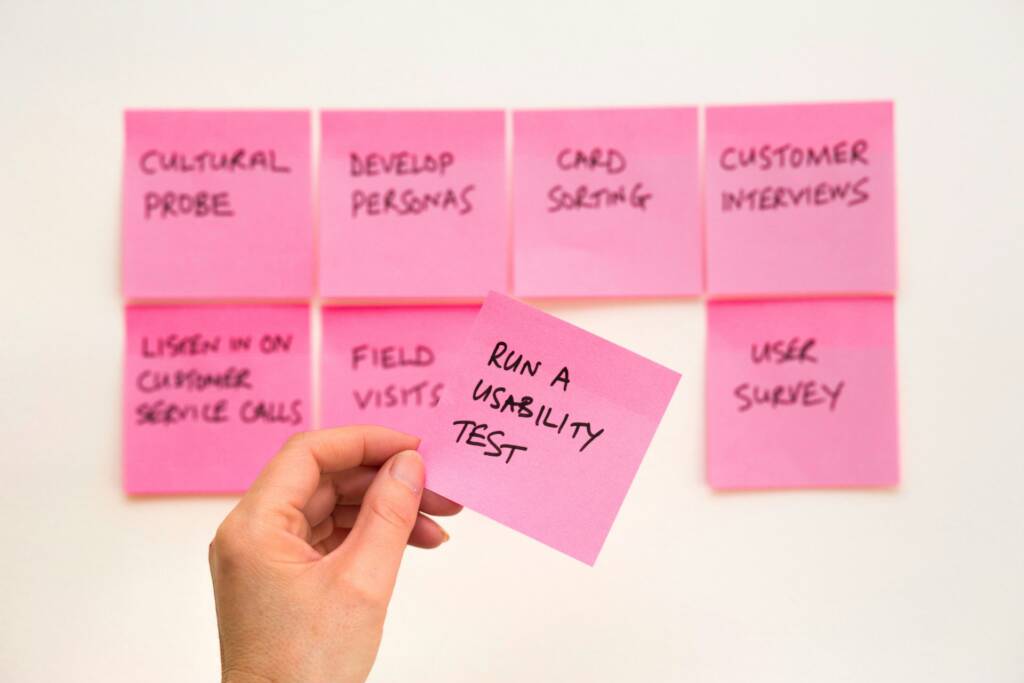
Przebieg testów użyteczności stron internetowych lub aplikacji mobilnych
Typowe testy użyteczności składają się z kilku kluczowych etapów:
- Przygotowanie testu użyteczności – określenie celów, wyboru narzędzi i grupy docelowej. Tworzenie scenariuszy testowych, czyli zadań, jakie będą wykonywać respondenci.
- Rekrutacja – pozyskanie uczestników testów, w tym rezerwowych, aby zapewnić reprezentatywną próbę.
- Faza badania – przeprowadzenie założonego badania użyteczności.
- Analiza i wnioski – przegląd zebranych danych, obserwacja zachowań użytkowników.
- Raportowanie – przekazanie wyników interesariuszom w formie raportu wraz z zaleceniami.
Testowanie użyteczności – jakie zadania?
Podczas testowania użyteczności strony internetowej lub aplikacji mobilnej użytkownicy otrzymują określone zadania, które mają odzwierciedlać realne scenariusze korzystania z produktu przez przyszłych użytkowników. Dzięki nim można ocenić łatwość obsługi, czy interfejs jest intuicyjny, a procesy – płynne i zrozumiałe. Najczęściej testowane działania to:
- Wyszukiwanie i zakup produktu – sprawdzenie, czy użytkownik bez problemu znajdzie odpowiedni przedmiot i przejdzie przez proces zamówienia.
- Odnalezienie i zamówienie usługi – analiza, czy strona pozwala szybko dotrzeć do oferty i skutecznie wypełnić formularz kontaktowy lub rejestracyjny.
- Rejestracja i logowanie – ocena intuicyjności procesu tworzenia konta, odzyskiwania hasła i zarządzania profilem użytkownika.
- Korzystanie z funkcji aplikacji – testowanie np. dodawania produktów do listy ulubionych, wysyłania wiadomości czy edycji dokumentów w aplikacjach SaaS.
- Kontakt z firmą – sprawdzenie dostępności i wygody formularzy, czatu online czy sekcji pomocy.
Jakie są korzyści z przeprowadzania testów użyteczności?
Testy użyteczności dostarczają kluczowych informacji o tym, jak użytkownicy korzystają ze strony internetowej lub aplikacji mobilnej, pomagając w identyfikacji problemów i optymalizacji ich doświadczenia. Najważniejsze korzyści testów użyteczności to:
- Wczesne wykrywanie problemów na różnych etapach projektowania – np. jeśli użytkownicy nie potrafią odnaleźć przycisku „Dodaj do koszyka” lub mają problem z przejściem do płatności, można to poprawić przed wdrożeniem na większą skalę.
- Lepsza nawigacja i użyteczność – testy pokazują, czy użytkownicy są w stanie szybko odnaleźć konkretną kategorię produktów, skorzystać z filtrowania w sklepie internetowym czy bez problemu dotrzeć do regulaminu.
- Zwiększenie konwersji – jeśli testy wykazują, że użytkownicy porzucają koszyk na etapie podawania danych do wysyłki, może to oznaczać, że formularz jest zbyt skomplikowany lub mało czytelny. Wprowadzenie zmian może przełożyć się na wyższą sprzedaż.
- Redukcja frustracji użytkowników – gdy w aplikacji bankowej użytkownicy mają problem z odnalezieniem historii transakcji lub w serwisie SaaS nie wiedzą, jak wygenerować raport, oznacza to, że interfejs wymaga uproszczenia.
- Dostosowanie do rzeczywistych potrzeb – testy pozwalają sprawdzić, czy nowa funkcja, np. opcja „Kup z odbiorem w sklepie”, jest faktycznie użyteczna i czy użytkownicy wiedzą, jak z niej skorzystać.
Dzięki testom użyteczności można także zweryfikować, czy kluczowe informacje (np. godziny otwarcia w serwisie rezerwacyjnym) są łatwe do znalezienia, czy komunikaty o błędach są zrozumiałe oraz czy strona nie wymaga od użytkowników zbędnych kliknięć.

Przykłady testów użyteczności
Testy użyteczności można przeprowadzać na różnych produktach cyfrowych – od sklepów internetowych, przez aplikacje mobilne, aż po platformy SaaS. Ich celem jest zidentyfikowanie barier, które utrudniają użytkownikom realizację zamierzonych działań. Oto konkretne przykłady testów i problemów, które pomagają wykryć:
Test procesu zakupowego w e-commerce
Użytkownik otrzymuje zadanie odnalezienia konkretnego produktu, dodania go do koszyka i finalizacji zakupu. W trakcie testu można sprawdzić:
- Czy łatwo odnaleźć produkt przy użyciu wyszukiwarki lub kategorii?
- Czy formularz zakupowy jest zrozumiały i nie zawiera zbędnych pól?
- Czy użytkownik nie rezygnuje na etapie wyboru metody płatności?
Test użyteczności aplikacji bankowej
Scenariusz zakłada, że użytkownik chce sprawdzić historię transakcji i wykonać przelew. Test pozwala ocenić:
- Czy użytkownik bez problemu znajduje zakładkę z historią operacji?
- Jak długo zajmuje mu dodanie nowego odbiorcy i wykonanie przelewu?
- Czy komunikaty błędów są dla niego zrozumiałe (np. w przypadku błędnego numeru konta)?
Test rejestracji w serwisie subskrypcyjnym (np. VOD, SaaS)
Zadaniem użytkownika jest założenie konta, wybór planu abonamentowego i zalogowanie się. Weryfikuje się m.in.:
- Czy użytkownik rozumie różnice między dostępnymi planami?
- Czy pole hasła i jego wymagania są jasne?
- Czy użytkownik bez problemu odnajduje przycisk „Zaloguj” po zakończeniu rejestracji?
Test procesu rezerwacji w aplikacji hotelowej
Scenariusz zakłada, że użytkownik chce zarezerwować pokój na konkretną datę. Test pozwala wykryć:
- Czy system filtrów umożliwia szybkie znalezienie odpowiedniego obiektu?
- Czy użytkownik nie ma wątpliwości co do ceny i warunków rezerwacji?
- Czy etap podawania danych do rezerwacji jest klarowny i nie powoduje porzuceń?
Każdy z tych testów pozwala zebrać cenne informacje o zachowaniach użytkowników, eliminować problemy związane z interakcją i zwiększać skuteczność produktu cyfrowego.
Testowanie użyteczności niezbędny element projektowania
Testy użyteczności to najlepszy sposób na odkrycie nieznanych obszarów problemowych, które mogą utrudniać użytkownikom realizację danego zadania. Niezależnie od tego, czy badamy sklep internetowy, aplikację webową czy serwis informacyjny, analiza pod kątem użyteczności pozwala zweryfikować, czy interfejs rzeczywiście wspiera użytkowników w korzystaniu z produktu.
Ważne jest, aby testy odbywały się w realistycznej sytuacji, z udziałem użytkowników reprezentujących docelową grupę odbiorców. Nie zawsze oznacza to indywidualne badania – w niektórych przypadkach lepszym rozwiązaniem mogą być grupy fokusowe, które pomagają zidentyfikować wspólne wzorce zachowań i oczekiwania.
Kluczowe jest również stosowanie metod, które dostarczają rzetelne wyniki i umożliwiają optymalizację produktu w oparciu o konkretne dane, a nie przypuszczenia. Ostatecznie, skuteczność testów zależy od tego, czy założone cele badawcze są dobrze określone, a w badaniu bierze udział odpowiednio dobrana grupa użytkowników, której doświadczenia pozwolą na wyciągnięcie praktycznych wniosków.
- Testowanie użyteczności jako typ badań UX
- Co można zbadać za pomocą testów użyteczności?
- Dla kogo testy użyteczności będą szczególnie przydatne?
- Jak przeprowadzać testy użyteczności?
- Testy użyteczności – rodzaje
- Stacjonarne moderowane testy użyteczności
- Moderowane zdalne testy użyteczności
- Niemoderowane zdalne testy użyteczności
- Przebieg testów użyteczności stron internetowych lub aplikacji mobilnych
- Testowanie użyteczności – jakie zadania?
- Jakie są korzyści z przeprowadzania testów użyteczności?
- Przykłady testów użyteczności
- Test procesu zakupowego w e-commerce
- Test użyteczności aplikacji bankowej
- Test rejestracji w serwisie subskrypcyjnym (np. VOD, SaaS)
- Test procesu rezerwacji w aplikacji hotelowej
- Testowanie użyteczności niezbędny element projektowania
Udostępnij











